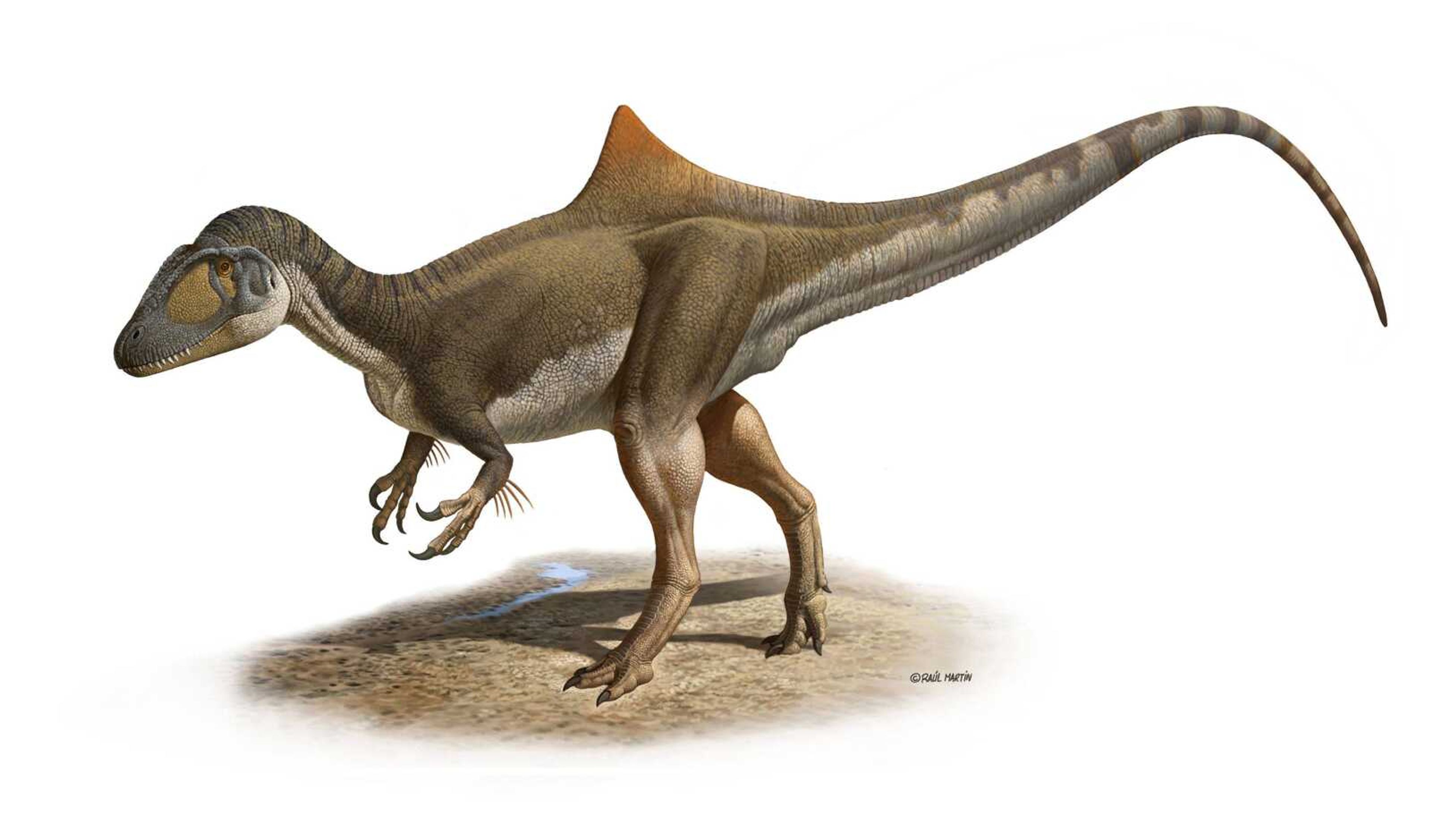Scientists discover dino with unusual hump
WASHINGTON -- The world of dinosaurs has just gotten a tad more bizarre. Scientists found a nearly complete fossil of a new dinosaur that sports a noticeable hump, possibly advertising. The hump on the dinosaur's back, which was at least 16 inches tall, may have been used to help this meat-eating theropod communicate among its own species, scientists theorize. Discoverer Francisco Ortega of Spain named it Concavenator corcovatus, which means "the hunchback hunter from Cuenca."...
WASHINGTON -- The world of dinosaurs has just gotten a tad more bizarre. Scientists found a nearly complete fossil of a new dinosaur that sports a noticeable hump, possibly advertising.
The hump on the dinosaur's back, which was at least 16 inches tall, may have been used to help this meat-eating theropod communicate among its own species, scientists theorize. Discoverer Francisco Ortega of Spain named it Concavenator corcovatus, which means "the hunchback hunter from Cuenca."
Ortega said the hump could have been used to store fat or regulate body temperature, but there is also the distinct possibility that it was used by concavenators to somehow differentiate themselves or communicate with each other. But with only one of these dinos, it's only speculation and is hard to figure out what the humps were meant to convey if they were tools of communication, he said.
Paleontologist Paul Sereno at the University of Chicago, who wasn't part of the study, thinks the only conceivable explanation is "an advertising role" because it follows similar pointy fins on other dinosaurs.
"It is an ornamental crest that helps to distinguish the individual," Sereno said in an e-mail. "Perhaps it was brightly colored, perhaps it would have been well maintained and large in strong, healthy individuals."
If that's the case, the hump could easily have been spotted from afar, Ortega said.
"It's really big," Ortega said Wednesday. "It's very, very impressive."
The 20-foot-long, two-footed dinosaur was from about 125 million years ago and was found in Spain, The discovery was reported in Thursday's issue of the journal Nature. It is the most complete skeleton of a meat-eater yet, scientists say.
Sereno called it "a spectacular specimen, a very great discovery."
This is the only fossil of its type, but Ortega said it's unlikely to be an individual deformity and more likely to be a new type of dinosaur.
And the hump is not the only strange feature of concavenator. On its arms it has knobs that seem like proto-feathers, giving more evidence of the connection between early theropods and birds, Ortega said.
Because of the lack of scales and likelihood of feathers, Sereno said he would put this creature "at the base of the theropod (meat-eating) branch of the dinosaur family tree."
Connect with the Southeast Missourian Newsroom:
For corrections to this story or other insights for the editor, click here. To submit a letter to the editor, click here. To learn about the Southeast Missourian’s AI Policy, click here.










